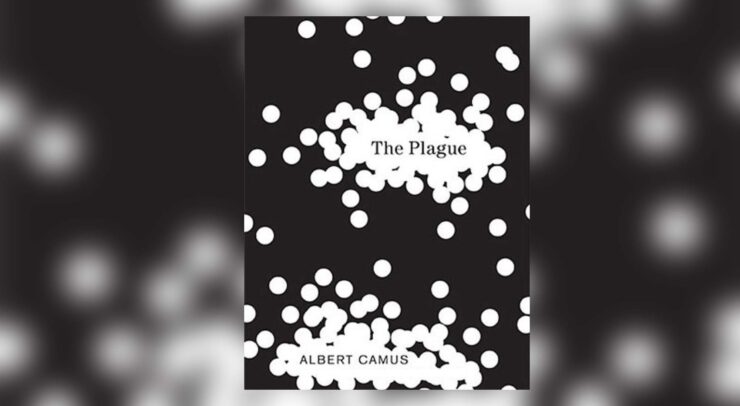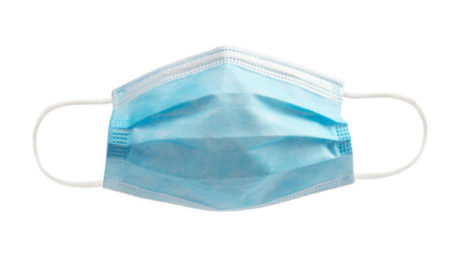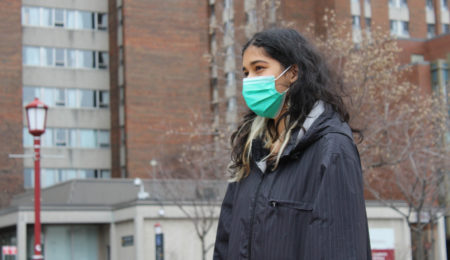What does The Plague teach us about COVID-19?
Within the first few pages of The Plague we are introduced to a city, Oran, described as a sand-coloured, brutalist, prison-like city with awful weather, locked in by walls on three sides and the ocean on the fourth. Against this exceedingly negative backdrop, we find ourselves in the midst of a sudden rat population explosion — the rats fill the streets and are in and of themselves a plague of Biblical proportions (recall the 10 plagues of Egypt). In this book, the plague of rats precedes a plague of the infectious disease kind.
Set in Algeria, in the 1940s, Camus’ mysterious illness takes inspiration from the bubonic plague, both in the physiological effects of the disease in the form of disgusting boils, pus and fever, and the history of Oran and its previous bubonic plague outbreaks.
Our main character is a doctor, so we see the city through his eyes. There’s a caveat, as the narrator’s identity remains hidden until later in the book, but we spend most of the time as the doctor. We become the analytical medical professional as he attempts to uncover the mysterious illness he sees killing his neighbours — and tearing apart his city from the inside. You can make the argument that the book is really about French colonialism in Algeria, or the Nazi occupation in France, or whatever, but I’m going to take it at face value: as a story about a plague.
Like with COVID-19, when we were all hesitant to admit anything was wrong, neither does our leading man. He is reassured by his mother and neighbours and treats the rats as nothing more than annoying pests — and he listens, because they tell him what he wants to hear. No one wants to believe in their imminent danger. When the doctor discusses the death with another friend, they realize that something is seriously wrong. When they head to the authorities, however, they are dismissed for being hysterical, and that the disease should resolve itself soon. Sound familiar?
Dr. Anthony Fauci, who we now know as the Chief Medical Advisor to the President, wrote a research paper in 2012, spinning a cautionary tale of a potential future global pandemic being a virus similar to a variant of H1N1 — a highly communicative disease with a relatively low fatality rate, the nature of its danger being its high R (infection) rate. COVID’s legal name is SARS-CoV-2, classifying it as a kind of SARS (severe acute respiratory syndrome) virus. Many Fulcrum readers may not remember the 2003 SARS epidemic in Asia, which soon spread to the rest of the globe in 2004, but was soon contained. And although no outbreaks had been reported since, until now, the CDC classified SARS as a select agent in 2012 — a “select agent” meaning that it posed a significant threat to public safety — the same year as Fauci’s research paper. Now, I’m no genius, but if my math is right, we had about eight years to prepare for a SARS outbreak, during which international medical professionals were fully aware of the potential destruction on a global scale. I’m sure you all know the rest of the story — it’s still being written right now.
In The Plague, the epidemic is contained within the town’s walls. The feeling of lockdown is familiar to all of us. So familiar, in fact, that sales of The Plague skyrocketed in Italy during their initial lockdowns. Lockdowns are something so inherently negative that one must be mad to relish in them: like the effective villain of The Plague, Cottard, who makes a fortune trading contraband into the city. Maybe if he was in charge he could fix the supply chain crisis. Who knows.
The doctors in The Plague are everyday heroes who commit themselves to help others, much like the dedicated healthcare workers who work day and night to protect us now, and for whom we briefly banged pots and pans together. Dr. Rieux has his own problems: an ailing wife, a dysfunctional social circle, a depressive affect — but he puts this all aside to work long hours at the makeshift hospital, dutifully tending to his patients whose bodies are ravaged by the disease. Through the moral crusades of his characters, Camus defines heroism as ordinary people doing their best in extraordinary circumstances.
I’m not saying The Plague should be required reading, but I think art is one of the best cures for our current COVID-riddled world, especially as we (hopefully) reach the end of it. As Arts & Culture editor, I’m no stranger to using art as a method of escapism from the horrors of the real world. See also: my Spotify wrapped, coming soon to an Instagram story near you, which will detail the excessive number of hours I spend plugged into my AirPods. And although I think taking a break from reality and delving into your own private world is good sometimes, at other times you need to reflect on your own reality. Reading The Plague consolidates these goals really well. It allows both a reprieve from the news cycle and the 24/7 horrors and allows you to put COVID into a historical perspective.
Unfortunately, as the closing paragraph of the book reminds us: it’s happened before, and it will likely happen again. “The plague never dies or vanishes entirely… it can remain dormant for dozens of years in furniture or clothing… it waits patiently in bedrooms, cellars, trunks, handkerchiefs and old papers, and… perhaps the day will come when, for the instruction or misfortune of mankind, the plague will rouse its rats and send them to die in some well-contented city.”
There’s a reason why they called him an existentialist. Now, if you’ll excuse me, I have “Penpals” by Sloan stuck in my head: “I write you from a far country, North of Africa, it is Algeria, and my city is Oran…”





